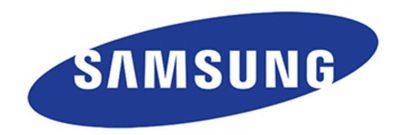Samsung Display today announced an unbreakable OLED smartphone panel that's been certified by Underwriters Laboratory (UL), an official testing company for the Occupational Safety and Health Administration of the U.S. Department of Labor.
The UL test indicates that Samsung's unbreakable display withstood 26 drops from 1.2 meters (4 feet) with no damage and held up to extreme temperature testing. Samsung says that the display was also subjected to a drop of six feet with no sign of damage.

According to UL, the unbreakable display developed by Samsung Display passed the rigorous real-time durability test that is based on military standards set by the U.S. Department of Defense. After a drop test administered at 1.2 meters (nearly 4 feet) above the ground 26 times in succession, and accompanying high (71 degrees) and low (-32 degrees) temperature tests, the Samsung unbreakable panel continued to function normally with no damage to its front, sides or edges.
According to Samsung, its flexible OLED panel uses an unbreakable substrate that's adhered to an overlay window, a deviation from other, more breakable flexible OLED panels that use a glass-covered window.
Samsung says that the unbreakable panels are being developed for use on smartphones but are likely to find viable markets with other products like display consoles for automobiles, mobile military devices, portable game consoles, and tablet PCs.
"The fortified plastic window is especially suitable for portable electronic devices not only because of its unbreakable characteristics, but also because of its lightweight, transmissivity and hardness, which are all very similar to glass," said Hojung Kim, general manager of the Communication Team, Samsung Display Company.
While UL-certification for the panel is being announced today, Samsung first showed off its technology at DisplayWeek in May, in the form of a 6.22-inch display that was targeted at automotive customers. Samsung has been developing flexible display technology for years.
As CNET's Shara Tibken points out, Samsung's announcement comes just two weeks ahead of when it plans to unveil the Galaxy Note 9, so it's possible Samsung's upcoming flagship smartphone could use this new display technology. With UL certification, the panel is ready to be used in consumer products.
Apple uses displays sourced from Samsung in its iPhone lineup, so it's not unreasonable to think that the Cupertino company could potentially adopt this technology in the future, should it meet Apple's demands for quality.
Apple sources its OLED displays for the iPhone X from Samsung and is expected to continue using Samsung as a supplier for the foreseeable future, though the company is working on securing additional display suppliers for diversification purposes.





















